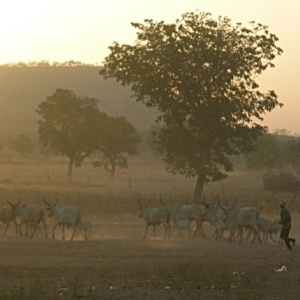
In this article published in the Economist, Jimmy Smith, director of the International Livestock Research Institute (ILRI) argues that the livestock issue requires a differentiated approach.
He argues that “Rarely in this discussion is a clear distinction drawn between the relatively rich people who make poor food choices (including over-consuming red meat and other rich foods) and the many poor people who basically have no food choices at all. And certainly not a choice of meat, which often is unaffordable, even though it could make a tremendous difference to their nutritional wellbeing.”
And he goes on to say: “Even a small daily portion of animal protein—a piece of meat the size of a deck of cards, for example—can change the lives of the world’s one billion undernourished people and the two billion vulnerable to food shortages. Such a modest amount can help end the maternal malnutrition that contributes to an estimated 800,000 infant deaths a year and the child undernutrition that contributes to nearly half of all deaths of children under-five worldwide.
“Meanwhile, researchers have shown that small but important changes in livestock breeding can provide cattle that would help poor dairy producers in East Africa increase their production per animal up to a whopping 300 per cent. Similar opportunities abound in the informal ‘backyard’ poultry production operations that already are a major source of food and income for poor people in sub-Saharan Africa and Asia. And it can be done with an eye toward health and safety and without resorting to the industrial approach common in developed countries.
“Livestock greenhouse gases are a legitimate concern, as they comprise about 14.5 per cent of such human-induced emissions. Herein also lies a huge opportunity: livestock’s contribution to climate change can be significantly reduced by improving the diets of cattle and other ruminant farm animals in developing countries, which subsist today largely on grass and crop ‘residues’—the stalks and leaves of crops that remain after their grain has been harvested. Providing affordable, more digestible feeds—and not grains that people consume—would address a key reason livestock in the developing world produce more gas per unit of product than their cousins in wealthy countries: poor diets. “
As regards high income country consumers:
“The recommended amount is about 90 grams (three ounces) of meat per day [NB see note below]. On a per capita basis, US consumers typically eat three times that amount while consumers in Botswana eat less than half. By 2050, the UK Department of Energy and Climate Change sees a potential to save up to 15 gigatons of CO2 –twice the annual greenhouse gas emissions generated by today’s total global livestock sector—if everyone in the world adopted the daily diet recommended by the World Health Organization. Doing this, of course, would require some of us to cut back on our daily intake of animal-source foods and others to improve their nutrition by consuming more.”
NB: it is unclear where the 90g recommendation comes from – it may just be a calculation based on the assumption that approximately 15% of food energy should come from protein, and assumes that this should be composed of animal protein. The World Health Organisation in its healthy eating guidelines makes no specific recommendations on meat intakes although in its very detailed 2007 report on protein requirements it concludes that a ‘safe’ level of protein is about 0.83g per kg of body weight per adult per day. For the average UK woman (and the average is overweight) this amounts to about 58g protein a day. The WHO does not specify the protein source – i.e. meat or non-meat. The report looks in detail at the various amino acids that make up protein, and our bodies’ requirement for a particular balance of these amino acids. The citation for the 2007 WHO report is:
Protein and amino acid requirements in human nutrition: report of a joint FAO/WHO/UNU expert consultation, WHO technical report series; no. 935, 2007.
Read the full WHO report here.
Note that as far as the UK is concerned, official dietary recommendations do not specify how much meat should be eaten or is optimal, although it is advised that no more than no more than 70g cooked weight / day should be consumed because of the association (contested by some) between red meat and cancer.
Read the piece by ILRI Director Jimmy Smith in the Economist here. For further discussion of the role of meat and dairy foods in relation to human requirements for protein and various micronutrients see this paper by Millward and Garnett here.







Post a new comment »